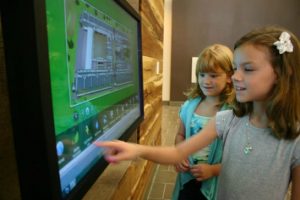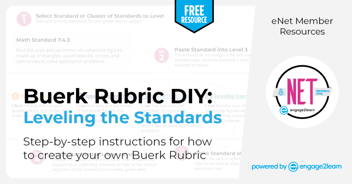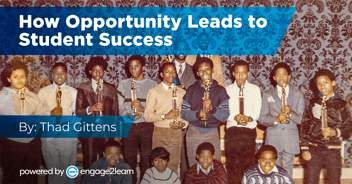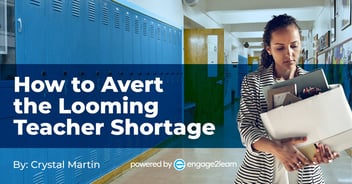How Buildings Influence Behaviors | engage2learn

You know how when you walk into a place and you get an immediate sense of the culture?
Places have a feel to them. I remember my classroom when I was a first-year teacher. It was sterile. It had a teacher desk, 35 student desks in rows, and an empty filing cabinet. I didn’t know a lot about learning environments at the time, but I did know that the four-time TAAS failures I was going to teach would feel more like failures in that space.
I had learned a little bit about learning styles from one of my mentors, Sherrye Dotson. I used the knowledge to create a learning environment that provided personalized choices for those students based on their preferences with comfortable, flexible seating and opportunities to be mobile and collaborate, and our results were amazing!
I became fascinated with the learning environment and how it seems to encourage certain behaviors. I had also read Tipping Point and the account Gladwell included about the broken window theory. The conclusion, which was also highlighted in Switch by Dan and Chip Heath, is that you can overcome complex challenges by making changes to the environment.
Buildings are the easiest way to influence culture, and in education, we need a few easy answers! Click To TweetI like to say that it is the easiest way to influence culture, and in education, we need a few easy answers! Physical surroundings both facilitate and inhibit certain behaviors. The built environment gives clues to people about how to act in those spaces. Seeing that in my students that first year of teaching inspired me to be intentional about the environment throughout my career in education. We need to design environments to create the experience that we want to facilitate and encourage the behaviors we hope learners will engage in to thrive.
We need to design environments to create the experience that we want to facilitate and encourage the behaviors we hope learners will engage in to thrive. Click To TweetI have had the opportunity to be involved in the design of numerous educational spaces that create a special feel for the people within them. I had the privilege of being a part of planning New Tech High @Coppell along with Jeff Turner, Tabitha Branum, and Sherrye Dotson, which had a modern office building feel. This school told students, “You are a professional, and you collaborate with others.”
I was also invited to be a part of the implementation at a very innovative building in Spring ISD with Dalane Bouillion at Gloria Marshall Elementary. This elementary school said, “Be curious; you can explore here.” At Metropolitan Schools of Design in Corpus Christi, a K-12 choice feeder I helped to design and implement, the school told students, “You are designers. Use this space to imagine, create, and try new things.”

I was involved with Derk Jeffrey and SHW group (now Stantec) in the re-design of Woodrow Wilson High School in DC public schools. This school said, “You’re a scientist. Experiment, problem-solve, and collaborate with others to come up with amazing solutions.”
I even had the opportunity to be involved in the design of a 21st century classroom for an Open Architecture Network (OAN) competition with Konrad Judd, Andy Sturm and Rob Winstead. This building was not just a building; we even came up with the concept of school in a backpack. This experience said, “Be autonomous, create your path, and use the resources around you to make it work.”
Sometimes the micro environment is the most powerful influence on our behavior and culture. The environment tells us how to act. There’s a lot of research to support this fact, and one of our favorite partners who conducts a lot of this research is Steelcase. Most of the Steelcase environments say, “Act like a human, be comfortable, be productive, and make your space the way you want it.”
Act like a human, be comfortable, be productive, and make your space the way you want it. Click To TweetMost recently, e2L has been involved more directly in environment projects, like the one in Fort Worth ISD. Dr. Scribner, Superintendent of Schools, wanted to make sure that all of the money invested in the design and construction of the environment would intentionally support the learning experience that would ensure learners in Fort Worth ISD were future-ready. Our e2L Fort Worth ISD team leader, Chris Everett, and other e2L team members talked with the community to find out exactly what the ideal learner experience meant to them. PBK Architects, our partner on this project, took what we facilitated and baked that into the design of the master plan for FWISD facilities.
We’ve had the same culture in public schools for 100 years. The building that says, “Act like a prisoner and behave like factory workers” is the one the majority of students in America are influenced by on the daily. It is time to make sure that the billions of dollars we spend on education and facilities actually influence the culture that we want today for our learners. Learning environments need to inspire the behaviors that help our learners thrive now and in the world to come.



